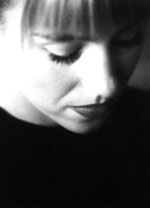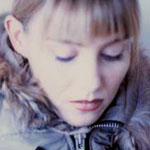
Back in the clubs some of the old soul crowd had been converted to the new electronic sounds. Neil Rushton ran the Inferno label, and in 1980 released the Out On The Floor collection, which featured northern soul favourites like Gloria Jones’ 'Tainted Love', Barbara Mills’ 'Queen of Fools', and Eloise Laws’ 'Love Factory'. It also featured 'They’re Talking About Me' by Johnny Bragg, whose story would be told in passing in Jonathan Lethem’s monumental Fortress of Solitude. By 1990 Rushton was running Network Records, and released the Bio Rhythm collection. In his sleevenotes John McCready wrote: “This is the sound that Salvador Dali would have made had he bought an 808 drum machine instead of a paint brush. This sequenced surrealism is a new music for an old age, the kind of sonic art created when human beings fall in love with machines and computers. This is special.” He went on to draw specific links between the new music and Joshie Jo Armstead’s 'I Got The Vibes', a northern soul classic, and 'Tell Me' by Life, an early ‘80s electro torch song on the Factory label.
Jeff Barrett, of Heavenly Records, was a huge fan of 'Tell Me' by Life, and he was the first to tell me about Andrea Parker. This would have been in 1993, and then Andrea was going to do pretty much everything better than anybody else. She was from Kent originally, and knew the classical avant garde, could DJ and create the best techno, electro, hip hop, and just about anything. She could sing with the best of them, and had the looks and presence of a star. He would have signed her but for some contractual difficulties, and anyway she was involved with the Fat Cat crew, at what was then an ineffably cool record shop in a Covent Garden basement selling the most essential electronic adventures on anonymous 12”s.
Andrea’s career never quite took off in the way it should have. Early on she collaborated on some electronic adventures for the Sabrettes label as part of Inky Blacknuss, producing gems like 'Drumulator', which still sound great. This was an incredibly productive period for underground music in the UK. In time she signed to Mo’Wax just about when it was the coolest thing on the planet. A couple of early singles ('Melodious Thunk' and 'The Rocking Chair') hinted at all sorts of possibilities. It would, however, be another frustrating few years by the time a full-length set, Kiss My Arp, was released. Mo’Wax was no longer the centre of attention. DJ Shadow’s moment had passed, and people were looking elsewhere, and sadly not at Andrea. In fairness though some of the best and most visionary Mo’Wax releases also came late in the day, like Urban Tribe, Blackalicious and Quannum, the Divine Styler, and David Axelrod.

A set for the !K7 DJ Kicks series preceded the Kiss My Arp release, highlighting Andrea’s DJ/mixing skills. The set veered consciously towards the dark side, and she seemed to be playing up this perverse side. An EP, The Dark Ages, a few more years on for Quatermass made this much more explicit. It was as though Andrea had tossed out of the window the rule book that talks about commercialism, concessions, and crossovers. This was spectacularly stubborn inventiveness at its best, and Andrea was the awkward and much needed mischief maker, who still somewhere along the way managed to get herself sponsored by Adidas and Ghost.
Over the next few years Andrea would stick to her guns, having fun DJing where and when she wanted. Rather like fellow maverick J Saul Kane with his DC Recordings, she also ran the fiercely independent electro label, Touchin’ Bass, which provided an outlet for occasional and adventurous, playful and provocative 12”s by her and Morley, as well as providing a platform for like-minded underground souls. A couple of compilation CDs released in 2005 showed that the label’s output was consistently of an incredibly high standard, and representative of what remained important activity in the shadows of popular culture.
Significantly Andrea became close friends with Mira Calix, another gifted electronic expeditionary. Mira released a series of great records for the Warp label, which were up with the best of any active listening full length sets, but they did not receive the approbation that they should have either. I guess that’s what you get for being ahead of the game. Or I guess it’s the price you pay for not properly playing the game.
© 2006 John Carney